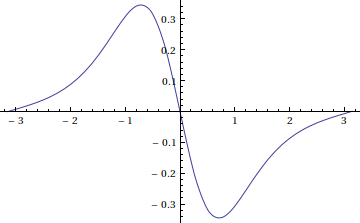For the non linear partial differential equation below, why are the Gradient, Laplacian and Divergence being evaluated to zero despite using the VectorAnalysis package.
Needs["VectorAnalysis`"]
Needs["DifferentialEquations`InterpolatingFunctionAnatomy`"];
Bo = 1/300;
\[Delta] = 10^-3;
\[Epsilon] = 10^-6;
r = 0;
m = 0.05;
\!\(
\*SubscriptBox[\(\[PartialD]\), \(t\)]\(h[x, y, t]\)\) +
Div[-h[x, y, t]^3 Bo Grad[h[x, y, t]] +
h[x, y, t]^3 Grad[
Laplacian[h[x, y, t]]] + ((\[Delta] h[x, y, t]^3) Grad[
h[x, y, t]])/(Bi h[x, y, t] + K1)^3 +
m (h[x, y, t]/(K1 + Bi h[x, y, t]))^2 Grad[
h[x, y, t]]] + \[Epsilon]/(Bi h[x, y, t] + K1) + r \!\(
\*SubscriptBox[\(\[PartialD]\), \(x\)]\((
\*SubscriptBox[\(\[PartialD]\), \(x\)]
\*FractionBox[
SuperscriptBox[\(h[x, y, t]\), \(2\)], \(K1 + Bi\ h[x, y, t]\)]\
\*SuperscriptBox[\(h[x, y, t]\), \(3\)])\)\)
I am doing this because I'd like to evaluate the magnitude of each of these terms at a certain time step.
Here is a simple sample code without the Vector Analysis package that works fine:
I solve a PDE using NDSolve and then plot each term (I call each of the two terms Eq1 and Eq2 here) at a certain time step.
sol = u /.
NDSolve[{D[u[t, x], t] ==
0.5 D[u[t, x], x, x] + u[t, x] D[u[t, x], x],
u[t, -Pi] == u[t, Pi] == 0 , u[0, x] == Sin[x]},
u, {t, 0, 2}, {x, -Pi, Pi}][[1]];
Eq1 = 0.5 D[u[t, x], x, x];
Magnitude1[t_, x_] = Eq1 /. u -> sol
Plot[Magnitude1[1.5, x], {x, -\[Pi], \[Pi]}]

Eq2 = u[t, x] D[u[t, x], x];
Magnitude2[t_, x_] = Eq2 /. u -> sol
Plot[Magnitude2[1.5, x], {x, -\[Pi], \[Pi]}]

